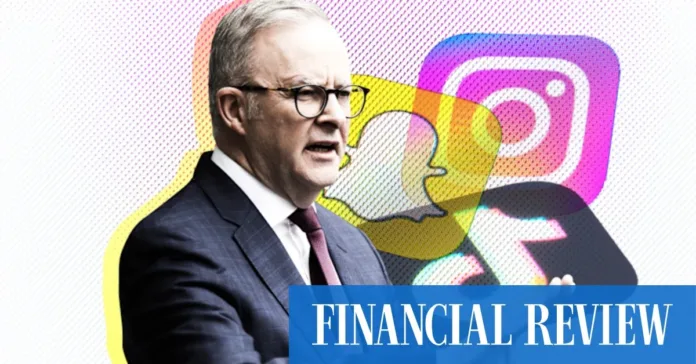Table of Contents
Major Tech Companies Reject Australia’s Under-16 Social Media Ban
Australia will introduce a national law banning children under 16 from using social media on December 10, 2025. The government asked Meta, YouTube, TikTok, Reddit, Snapchat, Twitch and Kick to publicly confirm compliance ahead of rollout, but most declined. Their silence signals legal caution rather than open defiance, setting up one of the most consequential tech-policy confrontations Australia has faced in years.
Australia’s under-16 social media law requires platforms to block children under 16 from signing up or continuing to use their services. The ban applies to public-facing social networks and takes effect on 10 December 2025. Messaging apps and gaming environments are excluded, creating immediate questions about where the boundary of “social media” truly lies.
The eSafety Commissioner designed the voluntary pledge as a unified show of support before enforcement begins. Its rejection reveals a more complicated reality. Major platforms are still analysing how the law intersects with global privacy rules, age-verification standards and the operational challenges of identifying underage users across millions of accounts. Their hesitation also shows the difficulty of reconciling Australian regulations with systems built for global audiences.
Not all digital services fall under the new requirements. Meta, YouTube, TikTok, Snapchat, Reddit, Twitch and Kick are included because they prioritise public posting and discovery. WhatsApp and Roblox are excluded as they fall under messaging and gaming. These blurred categories highlight the core difficulty facing regulators: online interaction no longer fits neatly into legacy definitions of “social media”, even as policymakers attempt to carve out legal boundaries.
Legal and Industry Responses to Australia’s Ban
Although the pledge is voluntary, the refusal to sign it indicates deep industry concern. Several companies are examining whether parts of the legislation conflict with international trade obligations or regional data protection rules. Google is assessing whether specific provisions justify a legal challenge. Industry bodies in the United States and Europe are studying the law to determine whether it restricts digital innovation or creates an unworkable model for tech platforms.
The consequences for non-compliance are severe. Platforms face penalties approaching fifty million dollars if they fail to enforce the under-16 restriction. Former industry executives have pointed out that although substantial, the fine represents only a few hours of global revenue for the largest platforms. This raises questions about whether financial penalties alone can meaningfully shape long-term behaviour. Meta has already begun removing accounts believed to belong to under-16 users in Australia, a sign of early compliance efforts. Other platforms are preparing age-verification systems, internal checks and updated safety workflows to minimise regulatory risk. The speed of these adjustments illustrates how quickly companies must move when legislation affects foundational growth segments and long-standing design assumptions.
Critics argue that the law focuses too heavily on blocking access rather than improving platform design, safeguarding tools and content quality. Others believe that fully excluding young people may reduce digital literacy and undermine their ability to navigate online environments safely. The eSafety Commissioner must balance these concerns against pressure from parents and policymakers who want stronger protections and clearer accountability from tech companies.
Practical enforcement questions remain unresolved. Platforms still lack consistent guidance on how to verify the age of millions of users without creating privacy risks or inadvertently locking out legitimate older users. Without a unified verification framework, uneven enforcement across platforms is inevitable. This uncertainty increases the likelihood that key elements of the law will be challenged in court, shaping a long period of interpretation and legal testing.
Implications for Digital Regulation and Platform Compliance
The widespread refusal to sign the pledge signals a growing tension between national governments and global technology companies. A law introduced in one country can trigger ripple effects for platforms operating at scale. Australia’s under-16 ban forces companies to reconsider their global compliance models, internal safety tooling and user-experience frameworks.
The law is part of a broader wave of digital regulation. Governments in Europe, North America and Asia are observing Australia’s rollout closely. If enforcement is successful and public support remains strong, other countries may adopt similar restrictions. Platforms must therefore weigh the immediate financial risk of non-compliance against the long-term strategic impact of reshaping access for millions of younger users around the world.
As December 10 approaches, the gap between regulatory ambition and operational reality is becoming more visible. The coming months will determine whether Australia’s law becomes a blueprint for global online-safety policy or the beginning of a prolonged legal contest over digital rights, platform responsibility and the limits of government authority.
SquaredTech will continue to track the developments, explore how platforms adapt and report on how enforcement unfolds as the deadline approaches.
Read more on our article of, Australia’s Social Media Ban for Teens Under 16: What You Need to Know for the Good of Our Kids, published on October 21 2025, SquaredTech.
For more Updates: TechNews


